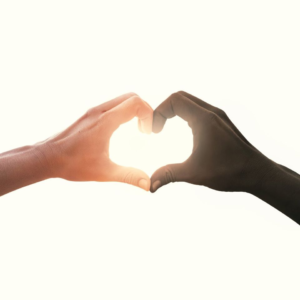The time is now
The strife over the past month has brought about much unrest, grief, pain, confusion and turmoil as it relates to racial tensions, racial injustice, police brutality and systemic racism. Teens and parents have shared their thoughts, feelings and questions with me about what they can do, how they can be helpful and how to evaluate their own biases. This topic is deserving of ongoing conversation so I will start that process today with this link to my most recent podcast with Dr. Bruce Perry, which is a meaningful conversation with practical ways to get you and your family involved in being the change that we need for a safer, more inclusive, accepting world to live and grow in for all.
What can I do as a parent?
My child doesn't see color.
We aren't racist.
We teach our kids to love people for who they are not based on the color of their skin.
These are just a few of the things that I have heard over the past couple of weeks. Parents that are horrified by what they witnessed happen to George Floyd. Police brutality and racism are now in the forefront of our daily conversations.
Some parents are actively fighting racism. Many other families just aren't sure what to do. They have different ages of kids, they want to do "the right thing" but beyond what they may already be doing to raise kind kids they want to do more.
What I have shared with them and what I want to share with you is that this is just the start of many conversations and actions. The key is that this isn't just a phase, a moment in time when the world seems to be united on racial inequity, but rather this is a movement that will sustain long after the headlines start to shift if we all do our part.
Here are some ideas, based off of my podcast conversation with Dr. Perry, about implicit bias and what we need to know.
1. Address racism head on- many people shy away from topics that they are uncomfortable with. This can be systemic in families where tough topics aren't talked about. In this case, use the news stories as a prompter to discuss what racism is, how you feel about it, and ask your children how they feel about it and what their experience is with it as well.
2. We all have implicit bias. This refers to the attitudes or stereotypes that affect our understanding, actions, and decisions in an unconscious manner. The sooner we can accept this the sooner you can deal with what your biases are.
3. Teach your children that giving up power won't hurt anyone. This is a driving force for resistance to change. Learn and practice how sharing power, having equal seats at the table is good for everyone.
4. Diversity is good for all human beings not just people of color. It helps us with problem solving, empathy, listening skills and broadens our spheres of influence and connection. Take a look at your community and look for opportunities to add different people, colors and viewpoints into it.
5. Start these conversations with younger children by talking about concrete issues such as stealing, lying and sharing. This means talking to them about fairness, justice and right and wrong in the context of their age group. Use movies, stories, and their real life situations to highlight your points. This will get them ready for the more abstract conversations that will happen as they continue to get older.
6. Racism needs to be dismantled. Dismantling means to take (something, such as a structure) apart so that it is in separate pieces. It also means to destroy (something) in an orderly way : to gradually cause (something) to come to an end.
Dismantling also means:
a) when something, such as a police system, is taken apart, it must also be rebuilt
b) people must spend time with other people who are different from them to change the filter on their lens
c) the media, television and movies must be mindful of how they portray people pf color as well as police officers
d) educational systems have their roles to play in terms of how history is taught. Parents needs to enhance and enrich their child's education as well by exposing their children to stories of slavery, native American Indians, civil rights and other minority group struggles.
7. People who feel safe can learn and change. Dr. Perry was the first thought leader to introduce me to that idea almost two decades ago when discussing how to create trauma informed educational learning environments. Safety is the foundation for learning and change. For families that means creating a safe home to talk openly about viewpoints and bias. For schools that means placing physical and emotional safety first before trying to teach.
For more thought provoking ideas and conversation, I encourage you to listen to my interview with Dr. Perry.
Happy Parenting.
